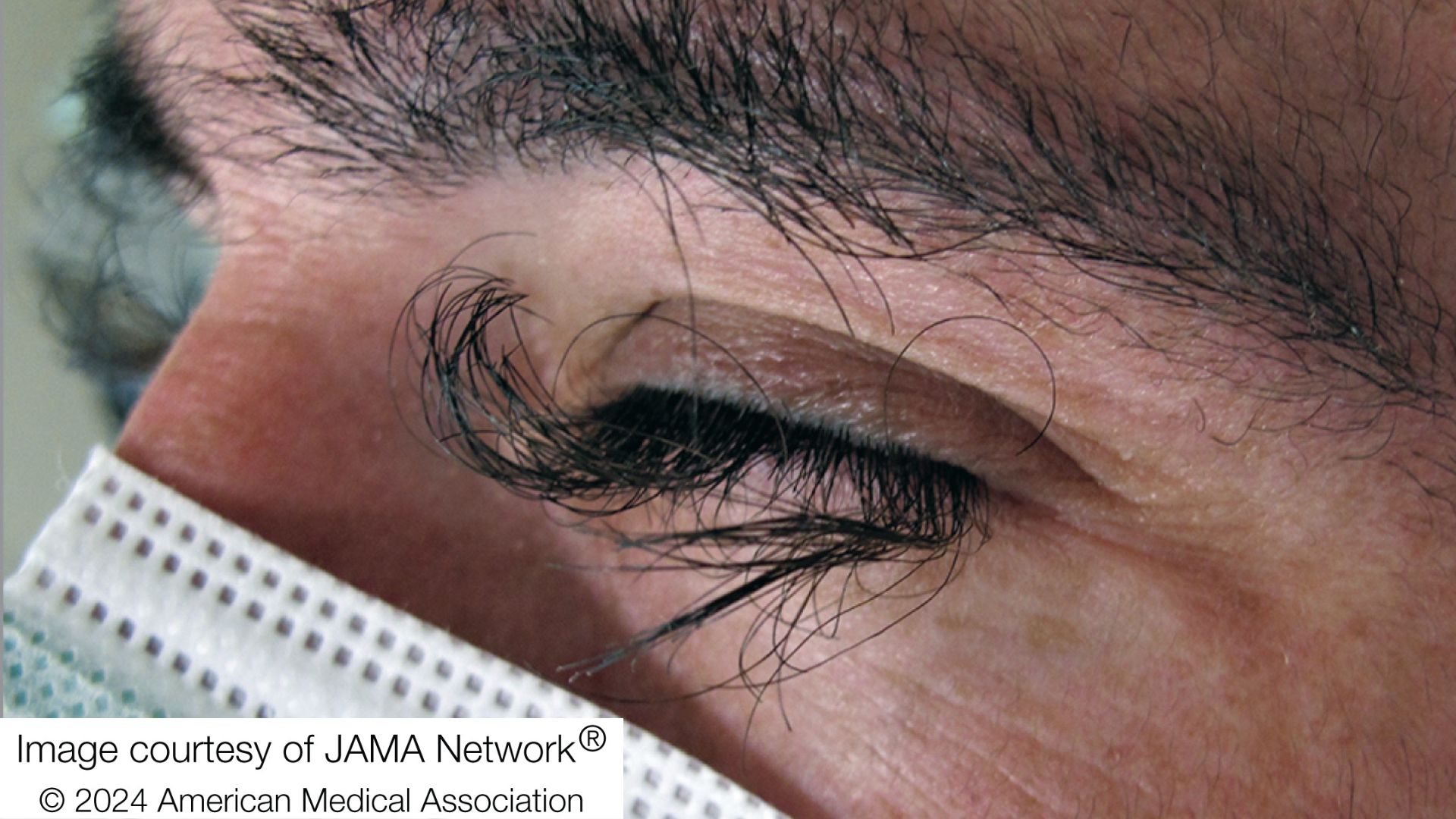Chemo side effect caused man's eyelash growth to go haywire
Some medicines can inadvertently cause people's eyelashes to grow incredibly long.

A man's eyelashes grew unusually long and developed a dramatic curl — and it turned out to be a side effect of his cancer treatment.
In a report of the man's case, published Wednesday (April 24) in the journal JAMA Dermatology, doctors called the patient's sudden eyelash growth "drug-induced trichomegaly." Trichomegaly refers to a condition in which eyelashes grow very, very long, usually exceeding their usual length by about 0.5 inch (12 millimeters) or more. At the same time, the eyelashes can become curlier, thicker and darker.
Several drugs can trigger trichomegaly, including a class of medicines known as epidermal growth factor receptor (EGFR) inhibitors. These include a chemotherapy drug called panitumumab, which works by blocking EGFR in the body; the man was taking this drug as part of a chemotherapy regimen for advanced colorectal cancer. By blocking the receptor on tumor cells, the drug increases the chances that the cells will self-destruct and also suppresses their ability to grow and spread.
However, EGFR isn't unique to cancer cells. The receptors appear in high quantities in certain types of tumors, but they are also found in healthy tissues, including cells found in the outer layer of the skin and in hair follicles.
Related: Why do we have eyebrows and eyelashes?
Evidence suggests that blocking EGFR may throw off the normal cycle of hair growth, extending the stage in which hair actively grows. Turning down EGFR has also been tied to an increase in hair coarseness and curliness, as well as to the formation of new hair follicles. The resulting, haywire eyelash growth is well established as a potential side effect of EGFR blockers, having been reported alongside striking images in other medical journals in the past.
In addition to chemotherapy drugs like panitumumab, other medicines can trigger trichomegaly. For instance, prostaglandins — hormone-like drugs used to treat glaucoma, among other conditions — are thought to boost eyelash growth in a similar way to EGFR blockers.
Sign up for the Live Science daily newsletter now
Get the world’s most fascinating discoveries delivered straight to your inbox.
The condition has also been tied to infections such as HIV/AIDS and to various genetic syndromes, including ones that affect the response to growth factors.
When panitumumab triggers eyelash growth, the side effect normally shows up within the first few months of a person starting treatment and goes away after the treatment stops, the report authors noted. In the man's case, he was simply given "detailed instructions regarding safe eyelash trimming" to deal with his extra-long lashes.
Trichomegaly is usually harmless, except in cases where the eyelashes start to grow in the wrong direction, toward the eyeball. This is known as trichiasis, and it can damage the outer layer of the eye and lead to ulcers, vision loss and, in severe cases, blindness.
Ever wonder why some people build muscle more easily than others or why freckles come out in the sun? Send us your questions about how the human body works to community@livescience.com with the subject line "Health Desk Q," and you may see your question answered on the website!

Nicoletta Lanese is the health channel editor at Live Science and was previously a news editor and staff writer at the site. She holds a graduate certificate in science communication from UC Santa Cruz and degrees in neuroscience and dance from the University of Florida. Her work has appeared in The Scientist, Science News, the Mercury News, Mongabay and Stanford Medicine Magazine, among other outlets. Based in NYC, she also remains heavily involved in dance and performs in local choreographers' work.









